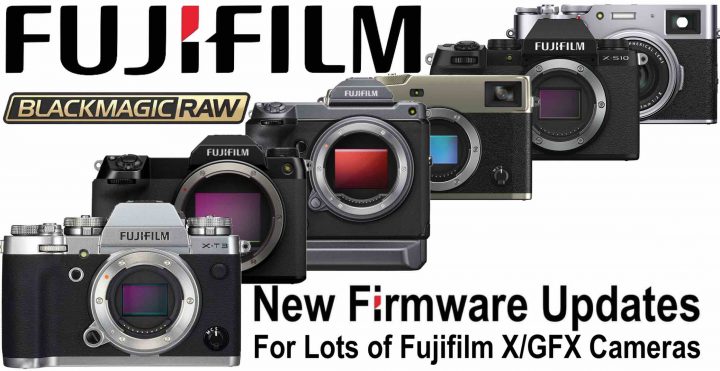National Geographic: “Fujifilm Reigning Champion of 2022 Best Travel Cameras”

National Geographic has compiled their annual list of best travel cameras. For 2022 Fujifilm comes out as their top recommendation.
Here is their list:
- Fujifilm X-T4 – currently on Black Friday discount
“This camera can go toe-to-toe with professional full-frame mirrorless models and DSLRs in performance, autofocus, image quality, and handling. […] One of the most impressive things about the X-T4 is that it retains retro charm (vintage dials) while providing professional-grade controls (modern, wheel based), weather sealing, and ports for video or still photography. This provides an enjoyable shooting experience for enthusiasts and pros. The X-T4 isn’t just an excellent travel camera, it’s one of the best mirrorless APS-C cameras on the market, which makes it—in my view—the reigning champion of 2022 travel cameras”
X-T4 (save $200): BHphoto / AmazonUS / Adorama
- Fujifilm X100V – BHphoto, AmazonUS, Adorama, Focuscamera
” The original X100 revitalized the brand and brought retro styling back to the forefront of camera design. Now the X100V, the fifth in the X100 series, brings a few significant changes. The lens has the same value (35mm f/2 equivalent), but a new design significantly increases sharpness corner to corner, both for wide open and close up images.The camera’s body design adds nearly full weather sealing, a flip-out screen, and a slightly changed grip, as well as improvements to the control layouts (including a control stick). Fujifilm cameras produce the best JPEGs in the industry, with amazing film simulations; cameras in the X100 line are often the backup of choice for photojournalists. This one has a leaf shutter that can sync to high speeds with a strobe and a built-in neutral-density (ND) filter for combatting bright sunlight“
And as last camera, probably Fujifilm’s best if you are on a budget and yet want tons of power.
- Fujifilm X-S10 – BHphoto / AmazonUS / Adorama / Moment / Focuscamera
“This model takes almost everything we love about the Fujifilm X-T4 and offers it up at an excellent price, with even better ergonomics and minimal tradeoffs. The only major downgrades from the X-T4 to the X-S10 are a smaller battery, only one memory card slot, no official weather sealing, a smaller viewfinder, and other features such as a lower top shutter speed (which only serious photographer will miss). Other than that, this option has the same internal electronics as the X-T4, thus making it the most affordable new model of APS-C mirrorless camera with IBIS. In all, it may be the best deal on the whole list.
The other cameras in their list are:
- Ricoh GR III and Ricoh GR IIIx
- Sony RX100VII
- Leica Q2, Q2 Monochrom, and Q-P
- Canon EOS RP
- Olympus OM-D E-M1 Mark III
Speaking of travel photography, I recently had to spend one night in the wonderful town of Ferrara for some medical checks (all good!). I did bring my X-E3 and X-T4 with me. And for the first time ever, I’ve found good use also for photography of the X-T4 selfie screen. So I guess I must retract my statement that selfie screens are never of use if you stand behind the camera. See the image down below.
Sieh dir diesen Beitrag auf Instagram an




